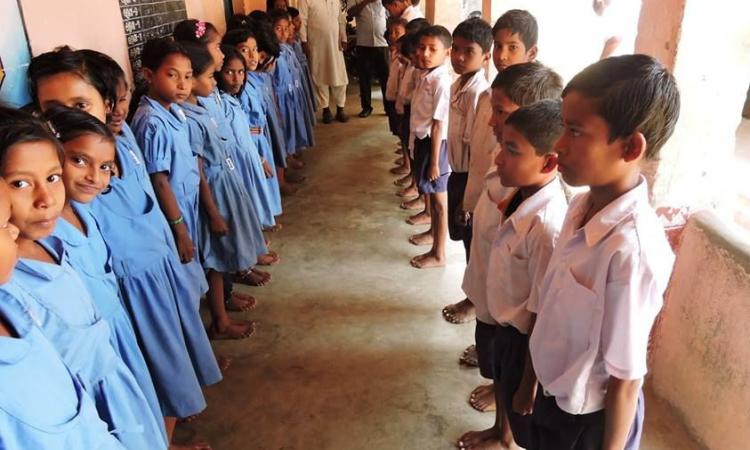
Rabindra Kumar Jena, the Member of Parliament (MP) from Balasore, Odisha knew that something was wrong with the health of people in a part of his constituency but he could not put his finger to it. By sheer chance, in 2015, he got to know that this seemed to be related to excessive fluoride in water, which caused a disease called skeletal fluorosis. Jena was attending a meeting organised by Swaniti Initiative and Arghyam where he pointed to instances of bone deformities and crippled people in areas surrounding Patripal village of Remuna block. That was when people suggested to him about the possibility of fluorosis contamination.
The union government’s Integrated Management Information System (IMIS) suggested that in more than 200 districts, habitations with high fluoride were reported. Balasore was free from fluoride, as per this National Rural Drinking Water Programme’s (NRDWP) database of water-quality-affected habitations. Not a single well in the district reported a high amount of fluoride. But then, people were becoming crippled in Balasore due to what looked like skeletal fluorosis. Clearly, this pointed to a problem in this data set, which was otherwise known for being one of the few granular open data sets of the country.
Getting ground information recognised
The problem was that this official data set is the reference point for planning safe drinking water programmes in the country. Balasore’s absence in it meant that its problems were not going to be addressed. Not just Balasore, there are several such places in the country, whose ground information was not being recognised. It is in this particular spot that the Fluoride Knowledge and Action Network (FKAN) stepped in.
A District Fluoride Mitigation Committee (DFMC) was formed in June 2016 and a parallel sub-committee set up in Remuna block of Balasore. Field assessments were done after setting up a local team of FKAN at Balasore followed by training of its members. This was followed by an overall survey in 30 out of 36 gram panchayats in the Remuna block. This led to a narrowing down and identification of the top eight, and later on to the top three, highly affected gram panchayats in which detailed assessments were carried out.
Various training programmes were carried out for Sarva Shiksha Abhiyaan programme officers and school teachers on fluoride and fluorosis to help these assessments, as part of which teachers were taught the basics of the problem, how to collect water samples and identify dental fluorosis cases. They were also oriented about the condition of skeletal fluorosis so that referral of such cases could be done.
A total of 30 out of 36 GPs of Remuna block responded to the fluoride water testing survey. In this procedure, a total of 439 water samples were tested from the GPs. Out of these, 30 water samples from three GPs--Patripal, Gududa and Chasakhand--showed high fluoride content. These 30 high fluoride water samples and an equal number of randomly selected low fluoride water samples were then tested in a certified laboratory. Apart from the above mentioned three GPs, Kalyanpur, Badpal and Nizampu also showed high fluoride presence. Also, the GPs with high fluoride wells were surveyed for fluorosis--dental, skeletal and other forms. After ground observations, FKAN conducted studies on the ground with supporting evidence and participation by government departments.
The voice of the MP became more amplified through all these efforts. Eventually in 2016–17, the villages of Patripal started appearing on IMIS which became a strong tool to take action. For example, the ministry of health leads a national effort on fluorosis with the National Programme for Prevention and Control of Fluorosis (NPPCF). This data now becomes the basis for asking NPPCF to consider Balasore as fluorosis affected.
The larger picture is that of water quality data becoming open, and its subsequent acceptance, reliability and access to people.
This post is extracted from the attached policy brief. For more information on this issue, please visit the Fluoride Knowledge and Action Network's website. You can also write to Sunderrajan Krishnan and Vikas Ratanjee, and join FKAN on Facebook.
/articles/fluorosis-detection-step-towards-providing-clean-water